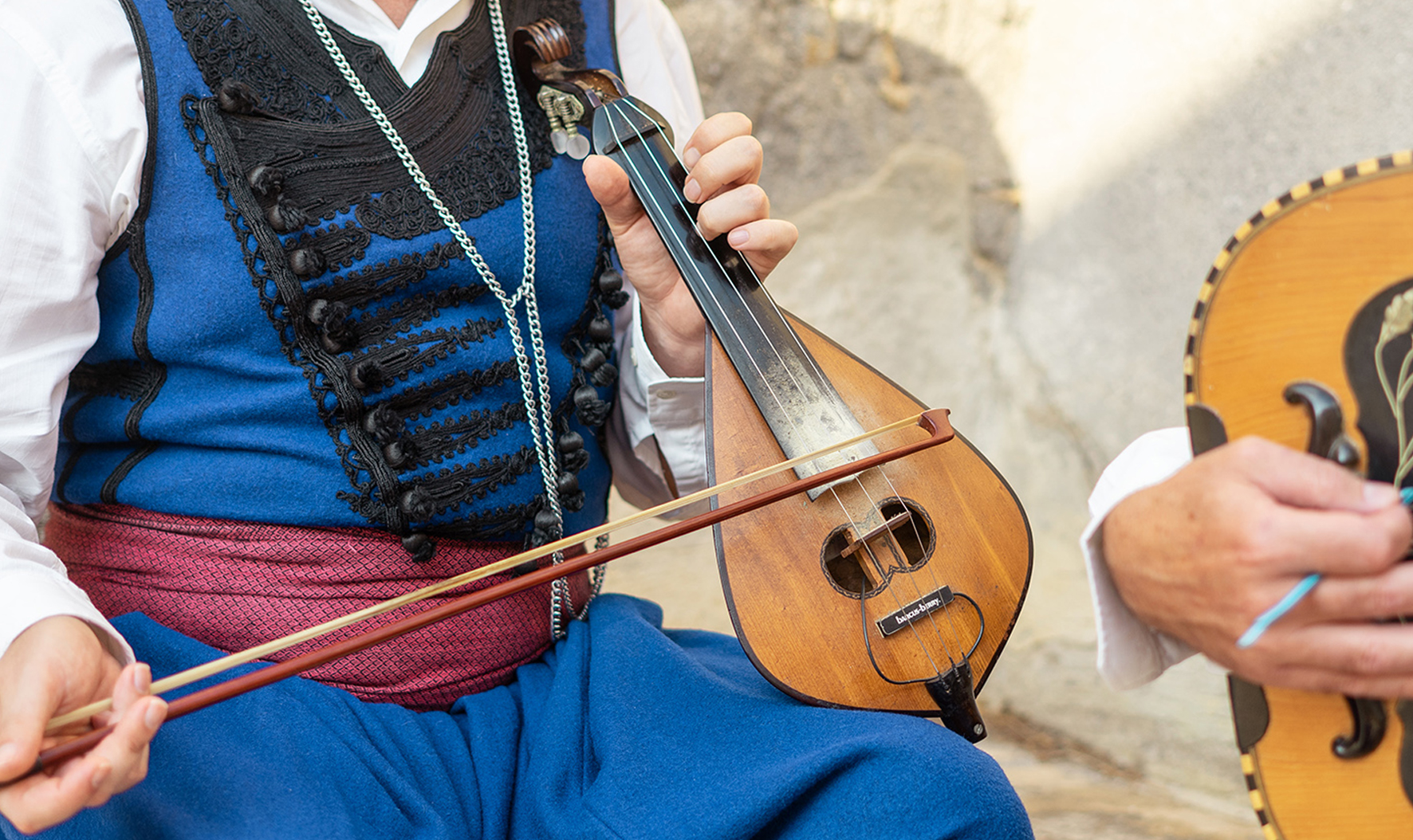Further Afield owners are a passionate bunch! Passionate about customer service, about the properties they open to guests and the places they live. This time long term Further Afield partner Marcus from Galini Breeze on Crete talks about local music on the island.
Lovers of Crete can enjoy its beaches, nature and antiquities, and certainly also the music. Cretan music is known for its unique sound and atmosphere. The strong emotional and rhythmic charge arose during the time of the historical dominations by Greeks, Arabs, Turks and Italians on the island.
Many traditional songs are recognisable and are about historical heroic deeds, love, prosperity and adversity. Traditional dances are often performed on it. There is the Pentozalis, a dance with high-jumping men, which can be seen as an expression of energy and strength. The rhythmic Syrtos is also beautiful; the village’s girls and women then dance gracefully and proudly at the village festivals such as Easter, Pentecost, and the Ascension of Mary.
In the Kafenion
You can hear Cretan music at any time of the year, certainly not just on public holidays. The musical instruments are never far away when groups of friends sit in a Kafenion.
More and more young men are participating in our village of Agia Galini and its sister village in the mountains, Melambes. That is very nice, as it shows that traditional music culture is definitely not disappearing.
Music lessons
The fact that traditional music is and remains an important part of social life in Agia Galini is partly due to Miro Papadogiannis. Miro is a celebrated musician who, in addition to his many performances throughout Greece, plays and sings about twice a week in the local music café of his uncle, Miron Tirokomakis, throughout summer. He has been teaching music in the village for a few years now and knows how to inspire young and old Cretan music.
So, I wanted to participate in that, too! In the Netherlands, I play in all kinds of bands, so I liked to get acquainted with these special chord progressions and rare time signatures of Cretan music, too.
Well, that was easier said than done…
The Laouto is nothing like a guitar
I joined the teaching group and borrowed one of the signature instruments in their music, the Cretan Lute (Laouto). It looks like a kind of 8-string guitar with a thick sound box. But the tuning of the strings does not simply run from low to high, like with a normal guitar. The 2nd string is tuned lower than the 1st, and then it goes up again with varying pitch spacings. That makes it sound very ‘Mediterranean’, but my knowledge of guitar chords was thrown straight into the trash…
Nine-quarter time
The time signatures in this music are also very special! Our Western music almost always has four beats (or three in the case of a waltz) per bar. However, the exciting and sometimes hypnotic Cretan music often has alternating blocks of two and three beats. Or one plays two beats of two and then three beats, or even 3 blocks of two and then one of three beats – hence a 9/4 time signature, for the experts.
That is much more varied than our standard time signatures, but it is difficult because you have to try to let go of your usual four-quarter time feeling.
Improvise and follow
In addition, the form of many songs is not predetermined. As soon as we started playing in a group, I noticed that the solo instrumentalist – usually also the singer – improvises during the song. He repeats important verses a few times, and his fellow musicians repeat that as if answering back. At the same time, he gives none or very subtle hints (cues) so that the rest of the company knows when the next chord comes or when to move from a verse to the chorus or vice versa.
Authentic, with feeling
This ‘following each other’ makes the music very authentic, but it is extremely difficult for Western-educated musicians like myself to play along smoothly. “But Marcus, you feel those transitions automatically, don’t you?” Miro asked. Yes, maybe if you’ve heard that music since you were little, but no matter how hard I tried, it didn’t exactly come ‘naturally…’!
So, after that rather hopeless year of lessons, I decided: as an ‘import musician’, I shouldn’t try to participate, but just enjoy the locals who play their Cretan music with so much natural feeling and energy!
Pop bands honour tradition:
And if we wanted to hear something different from the typical, sometimes melancholy sounds of traditional Cretan music, we sometimes went to the bars along the beach to performances by live rock bands such as Alone Together, ZeroZero and Headlong. But the great Matala Beach Festival at the end of June is warmly recommended for a complete introduction to contemporary Greek and Cretan music. The influence of the traditional styles is still clearly audible in many of the pop bands there. So, authentic Cretan music is still important to everyone’s cultural identity on the island!

